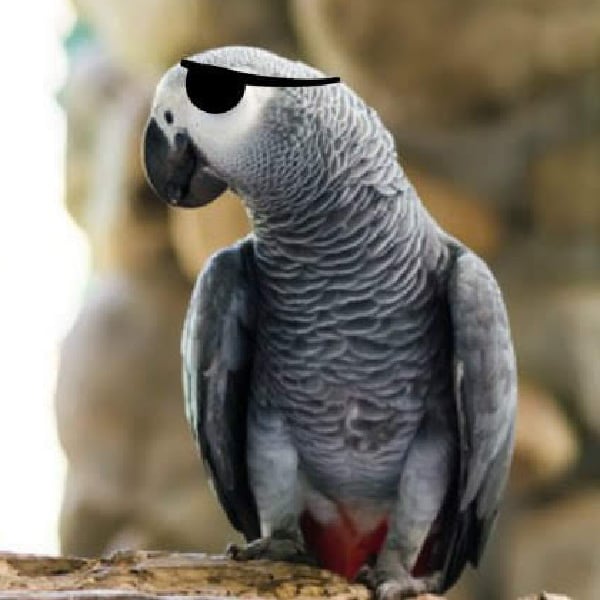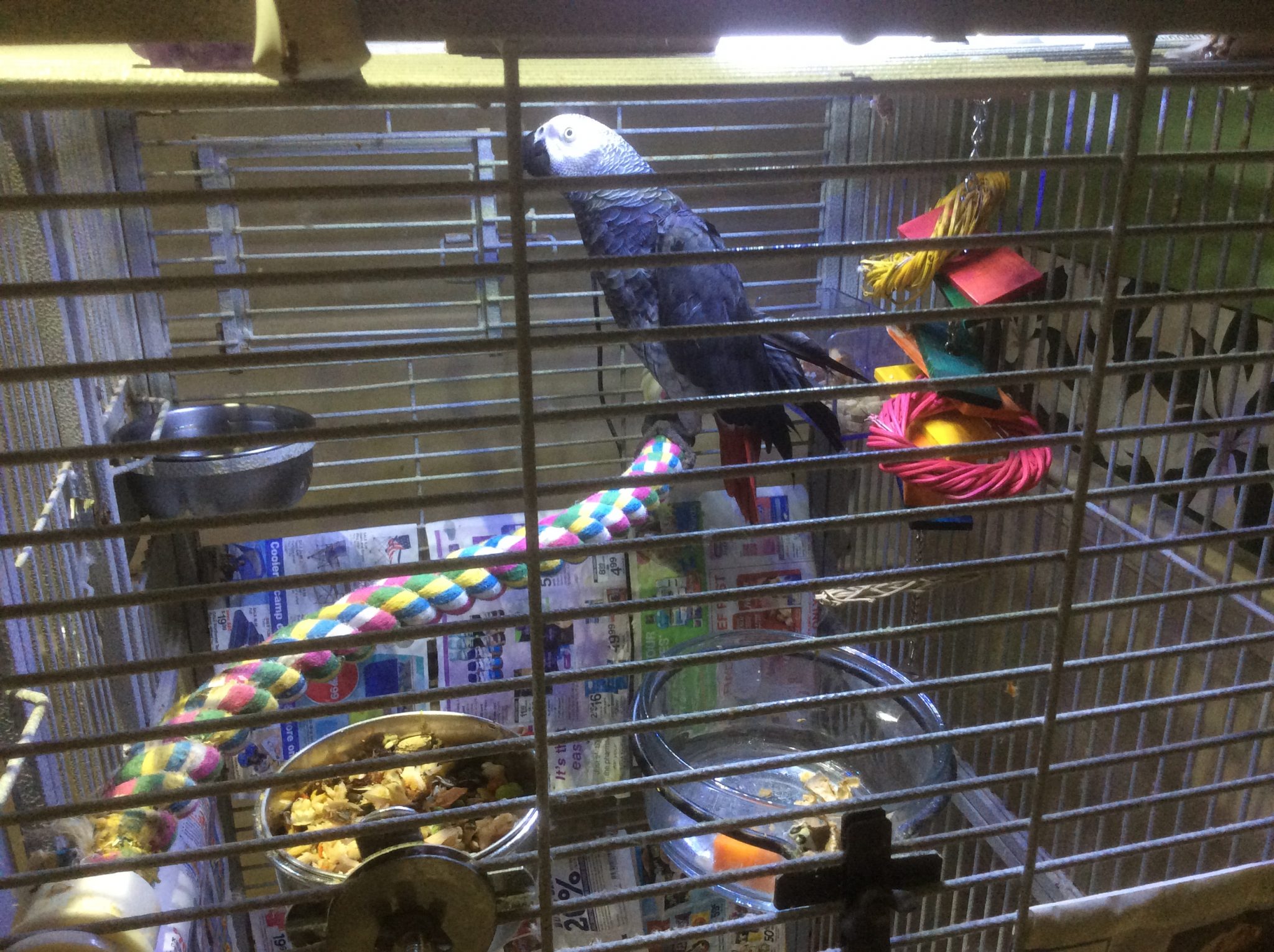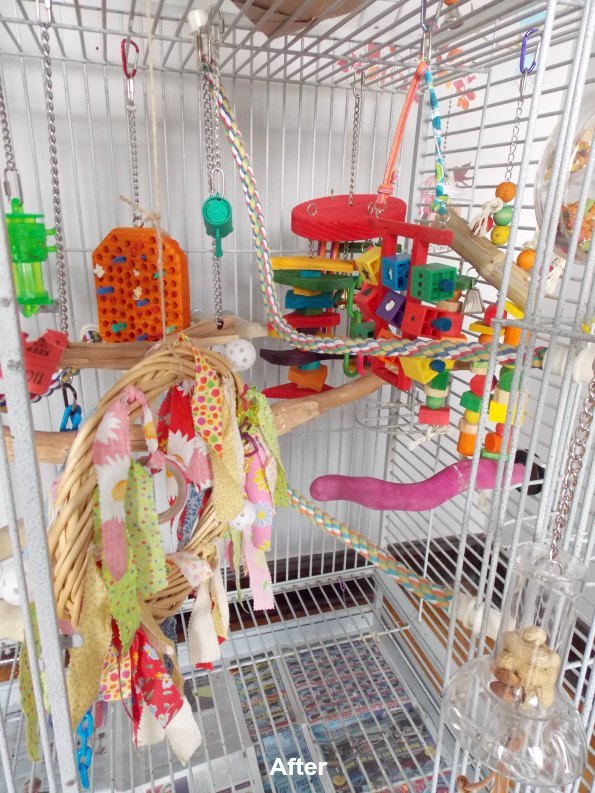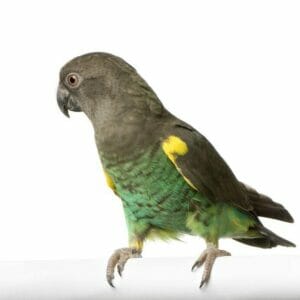
Would CBD Oil Help A One Eyed African Grey?
Last Updated on by Catherine Tobsing
Name: Inna M
Hello.
We have a 7 year old African grey.
Unfortunately we made a mistake and did not train him properly.
We are having problems with his behavior.
He attacks. He bites. He is angry.
He only obeys one person in the house.
Is it too late to train him? Who can we turn to?
Thank you.
Greetings Inna,
No, thank you.
I’m sorry for the problems you are having, this is fixable.
Before moving forward, some information as to why this is happening needs to be added.
It is normal for African greys both Timnehs and Congos to bond with an individual at a young age. What is opaque to most people is that African greys will bond with an entirely different individual around the age of 5, 6 or seven.
This is an evolutionary issue. It helps keep the flock “clean” by reducing and or eliminating inbreeding.
Wild African greys will initially bond with mom or dad but choose a non family mate going into adolescence
In other words the birds are smart enough to know not to mate with a family member.
Unfortunately this a behavior that few humans expect or plan for.
A simple first step, assuming the bird’s cage food dishes can be accessed from the outside of the cage is to have everyone in the household drop a favored treat in the food dish once or twice a day – while the bird is in the cage. This will signal to the bird that everybody in the household can make good things happen when they come close.
Next, we need to add full spectrum lighting no higher than 6 inches over the cage on a timer.
Your bird is expecting “equatorial” light cycles but is getting North American light cycles that change daily. This is a major stress point that triggers negative hormonal behavior.
By putting a light over the top of the cage and ensuring that the bird is in the cage when the light goes on and the light goes off in 12 hours cycles of light and darkness using a connected timer your bird will have a better understanding of when the day starts and when the day ends every 12 hours just like in the Serengeti plains of central Africa.
Please ignore daylight savings time changes as it has no meaning to the bird and is only more confusing.
The next step is to introduce clicker training starting with the one individual the bird has bonded to at this point in time.
Here is a collection of clicker training videos that will help you better understand the use and benefits of bird clicker training.
All the family members should be able to handle the birds with some sort of “stick” we recommend the long perch that comes with the cage because it really has no use in a birdcage.
To assist you at a more granular level I would need to know the bird’s diet including name brands and a picture illustrating the entire birdcage and birdcage set up.
Hope that helps at least is a start
Looking forward to hearing back from you
Best
MitchR
Hello I have had my male African grey parrot for 28 years.
When he matured sexually years ago he started plucking.
I have him on a plumage supplement now and he has lots of new quills and looks much better.
However he humps my arm with a thick sweater on.
He goes to completion if I let him once a day.
I have heard there is a hormone to calm him as he is definitely oversexed.
He has claimed me as his mate and is very sweet but needy.
He keeps getting new red tail feathers but chews on them till they are not pretty anymore.
In the past I tried getting him used to other birds but they never bonded.
Now at his age I know it’s too late to breed him.
Any help would be appreciated.
Also he is on a seed diet although I remove peanuts.
I would love to try weaning him to a pellet diet but don’t know which kind to buy and how to introduce it.
He has flight feathers but his chest is only down due to chewing.
I know he hasn’t damaged follicles as the feathers do try to grow back.
Especially with the plumage supplement which is only certain different seeds. Thanks
Dear Patricia
The hormone treatment used for birds is called Lupron, highly regarded by veterinarians.
We think it should not be used on animals nor humans (Lupron is an FDA approved drug originally developed to help sporadic growth in prepubescent females)
It is always difficult when we have a pet whose hormones are out of kilter.
Your grey sounds very frustrated. He has obviously accepted you as its mate and not just a flock mate.
I advocate that you to change the relationship.
How do you pet him?
Parrots must be pet only from the neck up. Petting below can be construed as foreplay and get the bird excited. No cuddling.
Having a sexually charged male is easier than a female as the egg production can be fatal over time to a single female bird stuck in high hormones.
I recommend that you do not allow the bird to have sex on your body.
Instead toss a few wiffle balls in the cage and let him try to enjoy them.
He may choose a cage bar, perch or toy to use instead, just let him.
What plumage supplement are you using?
Yes a supplement is useful to feed the regrowing feathers, but it may not affect his picking and barbering.
Constant masterbating can be bothersome but it’s not a life threatening problem unless he begins to pick too much and injure his skin.
Not allowing him to masterbate on you or feed you (if he does) may help.
Holding off on the touching below the neck will help.
No beak petting, lots of nerves to arouse in beaks
This webpage link offers a lot of useful information on hormonal problems and birds.
We’ve had good results with the following light treatment for our female cockatiel.
It can work equally well for males.
It requires subjecting your bird to 3 days and nights (72 hours) of continuous bright cage light.
You can go to 168 hours, one full week if necessary.
No tents, no bedding, no shade.
This causes their natural circadian rhythm to be broken and the reproductive cycle gets shut down.
It does not hurt and costs nothing but a little time and electricity.
If you try this please share your story
Just providing a proper light above the cage 12 hours on and 12 hours off should help with the hormonal behavior.
We have a customer who comes into the store saying her male Quaker was becoming a real pip, biting and overall had become a pain.
I suggested she get a light above his cage and within a month she told me she had her sweet boy back again on her shoulder watching TV with her.
Light is so important.
Pellets are a good food to get your bird on for at least a part of its diet, select a pellet, any pellet and make a small dish of them available every day.
In the evening take out the seed dish and leave just the pellets in at night, the next morning you can return the seed dish to the cage.
This may help get the bird to try them when they are hungry during the night. If your bird will take treats from you, use the pellets, he may like them hand fed. It is a good start.
Thank you
Catherine
From Brad S
I have had a phobic male African grey post for maybe 7 to 10 years now he’s blind in one eye and also continues to chew under his wings or around his wings.
It’s a shame because before he went phobic he was my bird and loved me to death I’ve tried everything.
He is terrified to come out of the cage
The only thing I can do is scratch his head but my thought was possibly trying CBD oil I’m curious as to your thoughts on this possibly correct dosing.
Hi Brad
Trust me when I tell you I am pro-medical marijuana.
That said I have no idea regarding the effects CBD oil will have on your bird.
We are just now learning the effects of cannabidiol on humans.
One of the things that we’ve known for a long time is that it can lower blood pressure and increase heart rate.
The last thing we want to do is increase a bird’s standing heart rate which is already about 200 bpm
You’re not giving me near enough information to provide any advice.
Is the bird flighted or are the bird’s wings clipped?
Has the bird been to a vet for a thorough examination?
The bird’s been in his cage, his wing muscles might’ve atrophied.
In the meantime please try this.
Take the most high value treats that your bird likes be it peanut, almond, nutri-berry.
Every time you walk by the cage drop the treat in his food dish. The goal is to have the bird make the association that every time you come by the cage good things will happen.
We do that with newly rescue birds who are scared of new humans. It can be a way to slowly pry your TAG or CAG out of the bird cage
If you can get the bird out of the cage on your hand.
After few days of handling the bird I would hold the birds feet and slowly waive the bird up and down allowing the birds wings to flat to see what kind of mobility it has.
This also can be done using a large Booda Comfy Perch with you holding the end in both bands like a U with the bird sitting on the bottom of the U, its talons can grab the rope very well and be raised and lowered causing the bird to flap its wings.
Great exercise.
Please let me know how that goes for you.
Best
MitchR
Thank you so much for getting back to me, my bird is flighted however I don’t think he can fly.
In the past I took him to several vets trying everything and spending a lot of money, my wife will not allow me to spend any more on him.
He’s been through a lot going to all these vets, he used to adore me so much, I think he wants to be with me as he reach out when I stick my head in his cage and ask for a kiss, he lets me scratch his head too.
He just grouches and screams when I try to get him to step up.
It all started years ago when he they flew to the ground when I was trying to clip his nails and I went to try to get him and it seem like it was down hill ever since, then he went blind and been chewing in the wing area, one side healed up but one is still there, I was always afraid to make him flap his wings for fear it would open up the scab areas.
He rarely touches a toy, I’ve been easing him out to take him to the shower with the other two grays.
They have their own shower rod to sit on
I will try your advice, do you think he will be able to fly ever?
Or is the damage done too bad?
Thank you
Brad
The rope perches the perfect substrate for a bird to sleep on.
I can’t help but wonder especially because of the incident with the bird hitting the ground if there wasn’t some injury to the foot or the leg.
Most people don’t realize that birds have no muscles in their feet or legs (from thigh down) only two tendons extending from the hip to the toes.
I would advocate easing the bird out of the cage and get it into a towel hopefully with the second person and doing a close inspection of the birds feet using a magnifying glass.
See if there’s a particular reaction when you touch a particular toe
That will be the start of our investigation.
My approach to solving physical issues with captive birds is much different than vets.
We look at the bird’s environment holistically.
By the way how many toys are in the cage?
Looking at the cage I have three recommendations
1) the light should be on a timer turning it on and off the 12 hour intervals not respecting daylight savings time
2) the cage should have 10 to 20 more bird toys.
A single bird toy is boring to the bird and he may like other stuff here’s what I call a decently cagescaped bird cage for a gray
3) birds get bored eating one a full bowl of food is always offered thus I would advocate a new delivery system
BTW this is one of my favorite African Grey bird cage set-ups
Can you feed an African Grey too many peanuts in a day?
Mitch Rezman, windycityparrot.com
Peanuts make a fine treat for birds but too many of anything will be bad.
I recommend leaving the shell on to make it a more enriching experience for the bird to work through.
Peanuts get a bad rap but it’s important that they are purchased from a trusted major manufacturer of pet bird food.
90% of the bird foods that are sold in the marketplace contain peanuts including peanut dust and have been tested for Aspergillus flavus mold spores before they ever make it into the said sealed bag.
They’re too big to be used for training as they take too long for a parrot to eat.
You will find them as part of wonderful blends in both Hagen Tropimix and Higgins Safflower Gold
Hagen Tropimix is developed at the Hagen Avicultural Research Institute in Canada.
Several hundred birds are there, both pet and breeding pairs and many have been there for about 30 years.
The birds are fed all lines of Hagen bird food including the blends containing peanuts.
Fecal tests are taken regularly by three full-time avian veterinarians on staff.
What I’m saying is especially with parrots don’t buy peanuts at the supermarket or the produce stand – get them from a well-known brand of bird food manufacturer to be insured of quality health and safety.
Curated answers by
Mitch Rezman and Catherine Tobsing
Author Profile
Latest entries
 The Traveling BirdJune 26, 2025Can You Name 5 Parrot Species That Are Living Wild in the USA?
The Traveling BirdJune 26, 2025Can You Name 5 Parrot Species That Are Living Wild in the USA? Bird BehaviorJune 26, 2025How is it Parrots Are Problem Solvers Social Animals and Even Use Tools?
Bird BehaviorJune 26, 2025How is it Parrots Are Problem Solvers Social Animals and Even Use Tools? Bird & Parrot AnatomyJune 25, 2025How a Tiny Chemical Modification Makes Parrots Nature’s Living Paintings
Bird & Parrot AnatomyJune 25, 2025How a Tiny Chemical Modification Makes Parrots Nature’s Living Paintings PigeonsJune 20, 2025How Do Parrots Thrive in Cities Outside Their Native Habitats?
PigeonsJune 20, 2025How Do Parrots Thrive in Cities Outside Their Native Habitats?




